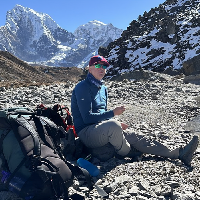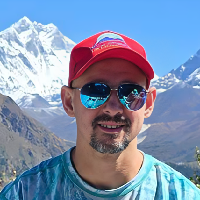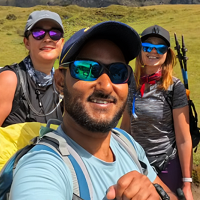404
The page you are looking for might have been removed, had its name changed, or is temporarily unavailable.
Go to HomepageThe page you are looking for might have been removed, had its name changed, or is temporarily unavailable.
Go to Homepage
What Our Clients Say About Marvel Adventure

This was perhaps the most wonderful, life-affirming, beautiful, challenging and even spiritual adventure I have ever had. Nir and his team at Marvel Adventures bend over backwards to be as attentive to the details as possible, and 100% enabled the trip to be as fantastic as it could be. Last minute flight changes, delayed baggage, kit purchases were all dealt with expertly by Nir. Our guide, Phinjo, was just the best, nicest, most humble yet very experienced person you could ever wish to meet, as was our porter. As a mountaineer, I am generally appalled by the whole Everest (climbing) circus, but there's no getting around the fact that trekking in the Kumbu area is one of those special, must-do experiences Right out of the box, day one, it was stunning, awe inspiring and beautiful. Meeting fantastic people along the way also made me realise that the package that Nir puts together not only takes the stress out of booking all the individual elements, but in the end, makes it cheaper! Nir and team, I wish you every good fortune in your future endeavours and thank you for putting together such a wonderful trip. I'll be back!

Did the A.B.C trek with my mum and had the most incredible time with our guide, Dibash. One of the loveliest, kindest people I have ever met. Anytime we wanted to know anything about the culture or our surroundings he was there to help. He made us feel so welcomed and kept us motivated throughout the trip. Could not recommend more to anyone who is even thinking about doing a trek. 10/10

From when we were met at the airport to when we finished our trek, Dibash took excellent care of us. He made our trip the success it was. We had a trip of a life time! We trekked for 7 days, we saw the breath taking Annupurna range so clearly. We ate very well and our accommodation was good. I would highly recommend Marvel for your trip. Make sure you ask for Dibash!

I took the Gokyo Ri Renjo La Trek and did the Kathmandu Cultural Tour prior to my trek. Rajesh was very informative throughout the cultural tour and was able to teach me a lot about the culture and history of both Hindus and Buddhists and what these sites mean to their people. Dinesh was my guide through the trek and he clearly knew the mountains, trails, and gave me tips to avoid problems while at high elevation. He helped me achieve my lifelong dream of seeing Mt Everest among many other famous Himalayan giants. Nir, the company owner, was very active in checking in on my experience and making sure things went as seamlessly as possible throughout my time in Nepal. He even walked me to shops he knew were trustworthy for special purchases. All of the sites were amazing, the mountains were stunning, and they booked the best teahouses in each village. I will only trek in Nepal booking through Marvel Adventures and will specifically request the same guides. They were nothing short of amazing. There are many options when it comes to trekking companies, but I believe Marvel is the best option.

There is no need to look any further for the best trekking company - Marvel Adventures is it!!! Not once did I ever feel that things were not being handled and I mean everything was taken care of by Nir and his team. Our guide Phinjo was more than I could have ever wished for - his knowledge of the geography and culture allowed me to gain an absolute deep understanding of the region. Phinjo also made sure that every step was taken (literally and physically) as safe as possible. Additionally, other guides were seeking his advice and they were saying how he is probably the best trekking guide in all of Nepal (and I more than agree to this sentiment). Lastly, be sure to have a city tour led by Ra Ju - he is an absolute joy and encyclopedia of knowledge, sure to educate you about ALL things Nepal. Marcel Adventures is worth ten stars!

Absolutely amazing trek!! I will never work with a different company. Our guide, Phinjo, took such good care of us. And taught us so much about the culture. Nir has been wonderful since the moment we set foot in Nepal and coordinated everything to ensure we were well taken care of. All the stars for this team!!

I recently completed the Everest Base Camp trek, and I can confidently say it was a once-in-a-lifetime experience. Made even better by the exceptional team that supported us throughout the journey.First, a big shoutout to our amazing Sherpas, Sukra and Prem, who were not only incredibly helpful but also so friendly and full of positive energy. Whether it was helping us along tricky trails or sharing local insights, they were always there with a smile and a lending hand.Special mention goes to our guide, Dibash, who went above and beyond to make sure each individual was well taken care of. From deciding what we should eat, wear, how much to sleep, to monitoring our oxygen levels daily. He truly had every detail covered. Honestly, I’m not sure how I’m supposed to manage life without him now that the trek is over! 😅This trip would never have been as smooth or enjoyable without such a fantastic team. Dibash, Sukra, and Prem made sure everything was seamless, and I can't recommend this trio enough for anyone planning the trek.If you're thinking about trekking to Everest Base Camp go with these amazing guys. You won’t regret it!





